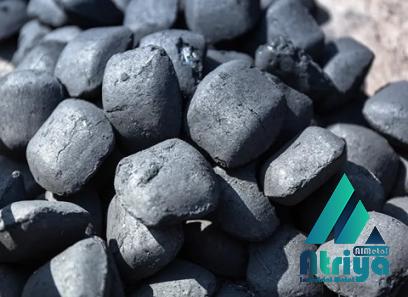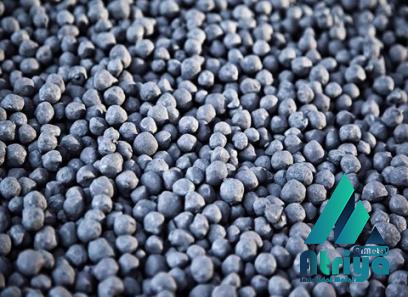A Game-Changer in the Steel Industry Direct reduction iron (DRI) has revolutionized the steel industry over the past few decades. This innovative process allows for the production of iron without the use of traditional blast furnaces, offering numerous advantages in terms of efficiency, cost-effectiveness, and environmental sustainability. DRI is produced through a chemical process that reduces iron ore to its purest form, thereby significantly reducing impurities such as sulphur and phosphorus. The direct reduction of iron takes place in a specialized furnace, where natural gas or coal is used as a reducing agent. This process occurs at relatively lower temperatures compared to blast furnaces, enabling a more efficient and controlled production of iron. One of the primary benefits of DRI is its lower carbon dioxide emissions. Unlike the conventional blast furnace route, the direct reduction process emits significantly less CO2 due to the absence of coking coal. This reduced carbon footprint has gained immense importance in recent years, as industries strive to meet stricter environmental regulations and lower their greenhouse gas emissions.

.
 Furthermore, DRI plants can be built closer to the source of iron ore, reducing transportation costs and improving logistics. This proximity to raw materials creates new opportunities for iron-producing countries with rich deposits, offering a competitive edge in the global market. It also contributes to local employment and economic growth, as these plants require skilled labor and infrastructure development. The versatility of DRI as a raw material sets it apart from traditional iron ore. DRI can be used in various steelmaking processes, such as electric arc furnaces and basic oxygen furnaces, to produce high-quality steel. Its low impurity content and uniform chemical composition enhance the quality of the final products, making it a preferred choice for steel manufacturers. In addition, DRI has a higher iron content compared to traditional iron ore, resulting in a higher yield during the steelmaking process.
Furthermore, DRI plants can be built closer to the source of iron ore, reducing transportation costs and improving logistics. This proximity to raw materials creates new opportunities for iron-producing countries with rich deposits, offering a competitive edge in the global market. It also contributes to local employment and economic growth, as these plants require skilled labor and infrastructure development. The versatility of DRI as a raw material sets it apart from traditional iron ore. DRI can be used in various steelmaking processes, such as electric arc furnaces and basic oxygen furnaces, to produce high-quality steel. Its low impurity content and uniform chemical composition enhance the quality of the final products, making it a preferred choice for steel manufacturers. In addition, DRI has a higher iron content compared to traditional iron ore, resulting in a higher yield during the steelmaking process.
..
 This increased efficiency translates into cost savings for steel producers, making DRI an attractive option from a financial standpoint. DRI has gained substantial prominence in regions with limited access to natural resources or those heavily reliant on imported steel. By producing iron locally, these countries can reduce their dependence on foreign suppliers and strengthen their domestic steel industry. This self-sufficiency not only contributes to national security but also creates a ripple effect throughout the economy, stimulating job creation and industrial growth. Moreover, the reduced water consumption in DRI plants is another noteworthy advantage. Traditional blast furnaces require copious amounts of water for cooling and dust suppression, whereas DRI plants utilize significantly less water, leading to conservation of this precious resource. While DRI undoubtedly offers multiple benefits, there are challenges that need to be addressed.
This increased efficiency translates into cost savings for steel producers, making DRI an attractive option from a financial standpoint. DRI has gained substantial prominence in regions with limited access to natural resources or those heavily reliant on imported steel. By producing iron locally, these countries can reduce their dependence on foreign suppliers and strengthen their domestic steel industry. This self-sufficiency not only contributes to national security but also creates a ripple effect throughout the economy, stimulating job creation and industrial growth. Moreover, the reduced water consumption in DRI plants is another noteworthy advantage. Traditional blast furnaces require copious amounts of water for cooling and dust suppression, whereas DRI plants utilize significantly less water, leading to conservation of this precious resource. While DRI undoubtedly offers multiple benefits, there are challenges that need to be addressed.
…
 The initial capital investment and operational costs associated with setting up a DRI plant can be substantial. However, with the continuous innovation and advancements in technology, these costs have decreased over time, making DRI more economically viable for steel producers. In conclusion, direct reduction iron has emerged as a game-changer in the steel industry, transforming how iron is produced and processed. Its environmentally friendly approach, reduced carbon footprint, and cost-effectiveness make it an attractive alternative to conventional iron production methods. As the demand for steel continues to grow, DRI presents a sustainable solution that addresses both economic and environmental concerns, paving the way for a greener and more efficient future in steel manufacturing.
The initial capital investment and operational costs associated with setting up a DRI plant can be substantial. However, with the continuous innovation and advancements in technology, these costs have decreased over time, making DRI more economically viable for steel producers. In conclusion, direct reduction iron has emerged as a game-changer in the steel industry, transforming how iron is produced and processed. Its environmentally friendly approach, reduced carbon footprint, and cost-effectiveness make it an attractive alternative to conventional iron production methods. As the demand for steel continues to grow, DRI presents a sustainable solution that addresses both economic and environmental concerns, paving the way for a greener and more efficient future in steel manufacturing.











Your comment submitted.